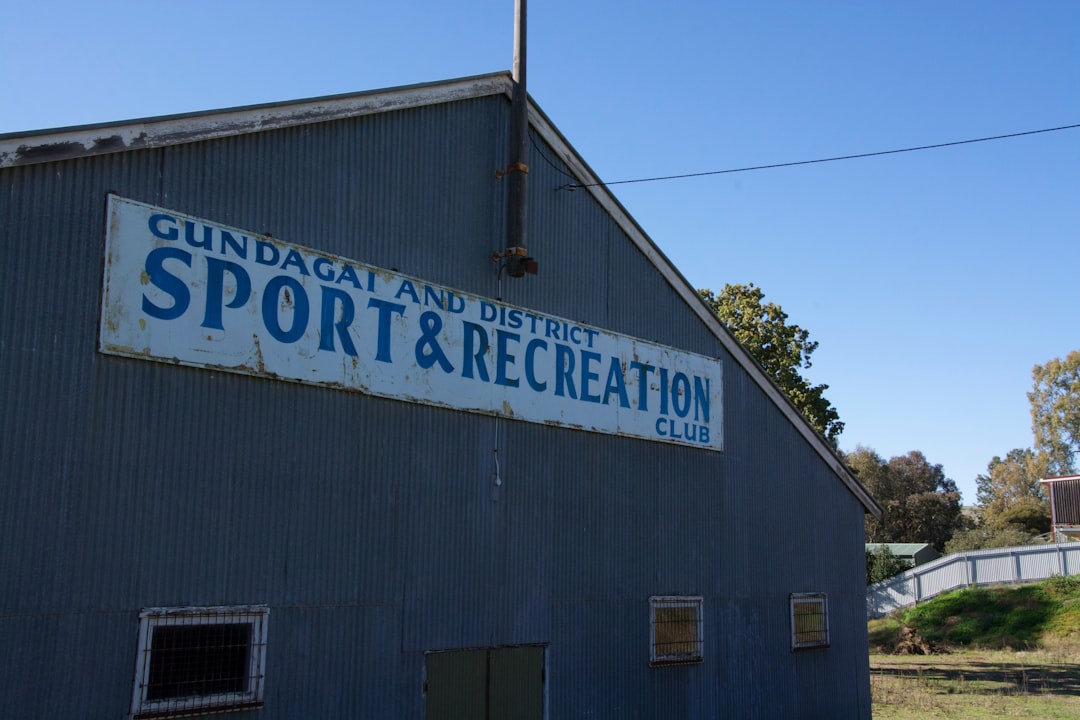

Engage prospects with a scan and streamline customer engagement with FREE QR code marketing tools by Sona – no strings attached!
Create a Free QR CodeFree consultation

No commitment

Engage prospects with a scan and streamline customer engagement with FREE QR code marketing tools by Sona – no strings attached!
Create a Free QR CodeFree consultation

No commitment
QR codes have evolved from a novelty to a strategic tool in QR marketing that bridges offline engagement with online action. For sporting goods repair services, QR codes offer a convenient, frictionless way to boost customer acquisition and increase returns on marketing spend. They also simplify customer interactions without requiring an app download or complex setup, which makes them ideal for busy athletes, parents, and coaches.
Many physical and digital touchpoints in sporting goods repair still rely on outdated analog processes. Paper intake forms, manual status updates, and static print advertising often result in missed prospects and wasted staff time. QR codes address these challenges by providing a direct path for customers to book service appointments, track repair status, or access care instructions with a single scan.
This guide explains how sporting goods repair shops can leverage QR codes to streamline workflows, strengthen the buyer journey, and drive measurable conversions across every stage of the customer lifecycle while addressing common frustrations such as anonymous foot traffic, untracked print spend, and time-consuming follow-ups.

QR codes turn every physical asset in your shop into a digital entry point that captures intent data and channels it into action. Instead of asking customers to type long URLs or wait on hold for updates, a quick scan connects them directly to the next step: booking, tracking, or learning. This reduction in friction is the single biggest factor behind conversion gains.
Start by mapping the moments where customers make decisions or need information. Replace paper-based elements and static signage with QR-powered flows that lead to fast, gratifying outcomes. For example, transform clipboard intake forms into mobile-friendly digital check-ins; swap generic posters for scannable offers that go straight to your appointment calendar; and replace generic business cards with vCard QR codes or SMS QR codes that save your number or start a conversation instantly.
By digitizing manual check-in sheets, in-store sign-up lists, and flyers, your shop eliminates friction and captures more qualified leads. Scannable workflows also reduce staff workload since customers can self-serve common actions like scheduling, status checks, or warranty registration. With Sona QR, every step is managed in one place: creation, dynamic destination updates, attribution, and segmentation.
Analog processes like printed brochures, paper punch cards, or manual email list sign-ups limit your visibility and slow down customers. QR-powered alternatives speed up the journey and make it measurable. You can test headlines on signage, adjust offer destinations instantly, and roll out different codes for different departments, such as cycled service, ski tuning, racquet restringing, and skate sharpening.

Sporting goods repair businesses operate in a high-touch, offline-first environment, yet the outcomes you want are digital: booked appointments, completed payments, repeat visits, and reviews. QR codes close the gap between the physical visit and the digital action by making next steps one scan away.
They also bring flexibility and control to print-heavy workflows. When you need to change pricing, swap promotions, or update repair windows based on seasonality, a dynamic QR code lets you update the destination without reprinting. This agility is especially valuable for seasonal businesses like ski and snowboard services in winter or bicycle tune-ups in spring.
In practice, this means putting QR codes on the materials you already use. Appointment reminder cards can link to rescheduling; warranty inserts can point to product care guides and registration; and billboards for chain locations can route by geo to the nearest shop with bookable services.
QR codes are flexible, which lets you match the format to the outcome you need. While web links are the most common, other formats can remove even more friction and promote faster action.
For this vertical, forms and web links are especially impactful for appointment booking and repair tracking; vCards help retain top-of-mind awareness; and review links help drive local SEO. Dynamic QR codes, available through Sona QR, are recommended in most cases since they allow you to change destinations as needs evolve and track performance over time.

Growth starts by placing QR codes where your audience already comes into contact with your brand. For sporting goods repair services, consider every surface that sees foot traffic: counters, windows, equipment, packaging, and event materials. Codes should be located near the moments where customers decide, ask, or wait.
Tailor each code to the buyer stage. Window signage can serve awareness with an offer or estimate tool. Counter signage can serve conversion with a Book now link. Post-service emails and packaging inserts can serve retention with review prompts and maintenance schedules.

Use cases should align with common customer interactions and the outcomes you want to drive. Below are three high-impact examples that digitize legacy touchpoints and improve conversions.
Other useful cases include QR codes on rental equipment to log damage reports, codes on fitting rooms to request assistance, and codes on demo gear to collect preferences before a sale. Each one reduces friction and captures intent signals you can act on.
Every scan signals interest. By deploying unique QR codes across your shop and marketing channels, you can automatically segment your audience based on who they are, what they scanned, and when they scanned it. That segmentation fuels personalized follow-up campaigns that drive repeat business and higher average order value.
Industry-specific distinctions make this powerful. Segment parents of youth athletes versus adult hobbyists; separate commuters using bikes for transportation from weekend riders; distinguish between high-performance race gear and recreational equipment. These nuances drive relevant messaging that converts better and reduces unsubscribe rates.
QR codes make every channel more actionable and measurable. They connect offline materials to digital journeys and help you see which placements drive the most engagement. With central management through Sona QR, you can coordinate codes across assets, track performance, and unify data with your CRM.
A connected offline-to-online funnel might look like this: a customer sees a window decal and scans to join your preseason appointment waitlist; later, they scan a service counter code to check in and complete a digital intake; after pickup, they scan a receipt code to leave a review and join your loyalty program. Each step delivers value to the customer while enriching your data for smarter marketing.
A clear process keeps your QR initiatives focused on business outcomes. Use the following steps to plan, launch, and optimize a campaign that boosts bookings, improves satisfaction, and proves ROI.
Start with a single high-value workflow such as appointment booking, then expand to repair tracking and reviews. Learn which placements and messages resonate, and build on those early wins with targeted follow-ups and seasonal programs.
Align your QR campaign to a clear goal such as appointment booking for spring bike tunes, event lead capture at a marathon expo, or post-service reviews for local SEO. Define the ideal action you want customers to take and the most likely environment where they will scan.
Tie the use case to your seasonal calendar. Bicycle shops often push tune-ups before riding season; ski shops drive wax and edge services in early winter; racquet services peak before tournaments. The right timing amplifies results.
Choose dynamic QR codes when you need tracking, flexibility, and retargeting. Static codes can work for permanent destinations such as a general contact page, but they limit your ability to update content and analyze performance.
With Sona QR, you can manage both types in one dashboard, route different codes to different destinations, and integrate scan data with your CRM for advanced attribution.
Make your codes unmistakably scannable and clearly beneficial. Add a strong call to action, use brand colors thoughtfully, and reserve enough white space so the code reads quickly on all devices.
If you add your logo inside the code, verify that it does not reduce contrast. Place a short URL below the code as a fallback. Testing in your actual environment prevents surprises after deployment.
Match placements to customer behavior. Use codes on counter tents for check-in, job tickets for status updates, and direct mail for at-home booking. At events, put codes on banners, staff shirts, and leave-behinds.
Stagger deployments to isolate impact. Launch in-store placements first, then add direct mail, then event assets. This cadence makes it easier to analyze contribution by channel.
Treat QR campaigns like digital marketing. Monitor performance by placement, test different messages, and iterate quickly. Connect scan events to downstream actions such as bookings and sales so you can attribute revenue.
Use Sona QR to track scans by time, location, and device; then connect those scans to CRM records in Sona.com for multi-touch attribution and revenue insights. Continuous improvement keeps results compounding.
A short post-mortem after each campaign helps you capture learnings. What placements overperformed, which audiences scanned most often, and what message moved people to act. Apply those insights to the next seasonal push.
Data turns QR codes from a novelty into a performance channel. Scan analytics show what gets attention, but the real value comes from connecting scans to outcomes such as booked appointments, upsells, and reviews. When you link QR events to your CRM and point-of-sale systems, you see which assets and messages drive revenue.
Track basic scan metrics first: volume, unique scanners, device type, time of day, and location. Then go deeper by tying scans to user profiles and actions. For example, a scan on a ski tuning poster that leads to a booking and a wax add-on should be attributed to that poster. If a QR on a bike repair tag prompts a status check and a text-to-pay completion, count it as both customer satisfaction and operational efficiency.
With Sona QR and Sona.com, you can capture scan details in real time, sync them to lead records, and apply identity resolution to connect anonymous scans to known customers. Sona’s Buyer Journeys link QR interactions with website visits, ad clicks, email engagement, and CRM activity. The result is a unified view from first scan to completed repair, which lets you allocate budget with confidence and prove ROI to stakeholders.
As your QR program grows, fine-tune your tactics to achieve better scan rates, cleaner attribution, and more automation. Focus on the tips that fit your most common media and customer behaviors.
Tie tips to practical deployments. Add a QR code to every ski and snowboard tuning tag for self-serve status updates; print Scan to rebook on bike tune-invoice backs; and embed Scan for care instructions inside packaging for protective gear. These subtle placements drive consistent engagement without crowding your counters.

Shops often struggle with anonymous engagement and untracked print spend. QR codes make every touchpoint measurable and actionable. The following examples illustrate creative placements and the types of results you can expect when you align codes with customer intent.
You can also think beyond the service desk. Create a QR-powered referral loop where customers scan to share a friend discount code; give teams and clubs scannable cards that track lead source; or invite UGC submissions through a QR prompt that collects permissioned photos for social proof. The goal is to make every piece of printed material work harder while giving customers fast, useful actions.
A few best practices consistently separate high-performing QR programs from average ones. Keep the following in mind as you roll out and refine your initiatives.
Common pitfalls include making codes too small, placing them too close to the floor or ceiling, using low-contrast colors, or burying the call to action in fine print. Avoid sending customers to long, multi-step forms on mobile without progress indicators or auto-fill. Each extra tap increases drop-off, which lowers your conversion rate and masks the code’s true potential.
QR codes are more than a shortcut. They are a strategy. For sporting goods repair services, they transform every surface into a digital entry point and every spark of interest into measurable action. From appointment booking and status tracking to reviews and loyalty, QR-powered workflows remove friction for customers and reveal what works for your business.
Here is what they deliver when executed well: instant engagement across signs, stickers, receipts, and mail; a connected experience that moves people from awareness to booking to advocacy; and actionable data that turns each scan into a signal for growth. With Sona QR, you can generate your first codes in minutes, update destinations without reprints, and see performance by placement and campaign. With Sona.com, you can connect scans to revenue using identity resolution, multi-touch attribution, and CRM sync.
Start creating QR codes for free. Start small by digitizing one high-impact moment such as booking at the counter or status tracking on repair tags. Prove the value, then roll out QR codes across your storefront, print, and event programs. The shops that lean into QR integration now will deliver more convenience, capture more demand, and build stronger relationships in a market where service and speed set the winners apart.
QR codes have revolutionized the sporting goods repair services industry by transforming customer interactions into measurable opportunities for growth and loyalty. Whether it’s streamlining appointment bookings, providing instant repair status updates, or sharing maintenance tips, QR codes enhance customer acquisition and deliver seamless, engaging experiences that keep clients coming back. Imagine instantly connecting customers with personalized service options and tracking which touchpoints lead to repeat business and increased revenue.
With Sona QR, creating dynamic, trackable QR codes is effortless. Update campaigns on the fly without reprinting, gain real-time insights into customer behavior, and link every scan directly to your bottom line. No more guesswork—just targeted, data-driven strategies that turn every interaction into a meaningful conversion.
Start for free with Sona QR today and transform your sporting goods repair services into a smart, customer-centric powerhouse.
You can find local sporting goods repair services by scanning QR codes on storefront windows, event booths, or direct mailers which link to appointment booking and service details.
Repair costs vary by service and equipment type, and QR codes can provide up-to-date pricing and promotions directly when scanned, eliminating the need for printed materials.
Sporting goods repair services commonly handle bikes, skis, snowboards, racquets, hockey gear, and skate sharpening among others.
You can use QR codes on equipment tags or shop signage that link to care guides and inspection checklists to help determine if professional repair is needed.
QR codes simplify booking, repair status tracking, and accessing care instructions, reduce staff workload, enable dynamic content updates, and provide measurable marketing insights.
Repair shops attach QR-coded labels to repair tickets or gear which customers can scan to view real-time status updates, estimated completion times, and pickup instructions.
While no app download is required to use QR codes, platforms like Sona QR enable shops to manage repair bookings and tracking digitally in one place.
Use QR codes to access customer reviews on platforms like Google and Yelp, and choose repair shops that provide transparent booking and status tracking through QR-powered workflows.
Scan QR codes on equipment tags or packaging for care guides, warranty registration, and maintenance schedules to extend the life of your sporting goods.
Post-service QR codes on receipts and email follow-ups can link you directly to review platforms where you can read and leave feedback about your repair experience.
Use Sona QR's trackable codes to improve customer acquisition and engagement today.
Create Your FREE Trackable QR Code in SecondsJoin results-focused teams combining Sona Platform automation with advanced Google Ads strategies to scale lead generation

Connect your existing CRM

Free Account Enrichment

No setup fees
No commitment required

Free consultation

Get a custom Google Ads roadmap for your business






Launch campaigns that generate qualified leads in 30 days or less.
